r new
FOCUS ON:
The curse of the high-resistance joint

Innovations Industry News Applications Expert Opinion
preventive maintenance for VSDs
Quarter 2 2023
Practical
The journal from
Condition monitoring & predictive maintenance FOR THE MAINTENANCE, REPAIR, REPLACEMENT AND MONITORING OF ROTATING MACHINERY
Brook Crompton
IP23 Cast Iron
Range from 18.5kw 710kw in
frame sizes 160 to 355





In Stock
New Motors
TT Electric
Full range of High Quality DC Motors from 1kw to 2000kw IP23 IP55.
In Stock
Re-Conditioned Motors
• Cage up to 1mw Ex Stock
• Slip-Ring up to 500kw Ex Stock
Large Stocks of Electric Motor Spares Both Current and Obsolete Including:-


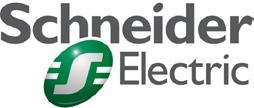
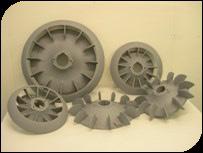
Brook Crompton Series 7 Steel
Motor spares
Brook Crompton Series 6 Cast Iron
Motor Spares

• Fan Covers
• Terminal Box Assemblies
• Endshields
• Bearing Covers
• Slip-Ring Assemblies
• Brushgear
• Carbon Brushes
• Cooling Fans
• D C Motors
• High Tension Motors 3.3Kv
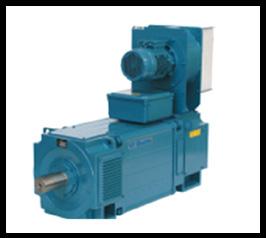
• Geared Motors
• Two Speed Motors
• Vibrator Motors
Variable Speed Drive Specialist
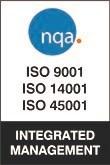


Schneider Altivar Range of Variable Speed Drives from 0.18kw to 315kw available Ex Stock
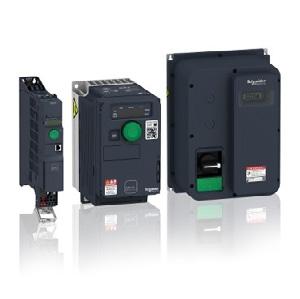

87 Kingstown Broadway, Kingstown Industrial Estate, Carlisle, Cumbria, CA3 0HA Tel : 01228 552000 Fax : 01228 552001 E -Mail: electrics@park-gate.co.uk
ST STOCK OF ELECTRIC MOTORS IN THE U.K.
LARGES
Editor Chris Callander chris@renew-mag.com
+44 (0)1732 671123
Contributing Editor
Suzanne Gill suzanne@renew-mag.com
Publisher Andrew Castle andrew@renew-mag.com

+44 (0)7785 290034
Accounts
Touchwave Media Ltd accounts@renew-mag.com
Production G and C Media Ltd production@renew-mag.com
Founded in 1945, the Association of Electrical and Mechanical Trades is an International Association representing companies in the electrical and mechanical service and repair industry.
In this issue of Renew, our focus area is predictive maintenance and condition monitoring.
You might expect businesses in the repair sector to want electromechanical equipment to fail so it can be repaired. But this isn’t the case. The AEMT and its members strive to give their customers the best support possible. Yes, sometimes that means being able to respond quickly in the event of an unexpected failure, but if we can help our customers to keep their systems running effectively and efficiently, that is a far better outcome. And this is where condition monitoring and predictive maintenance come in.


By detecting and addressing issues before they cause significant equipment damage, companies can avoid expensive repairs or replacements. Predictive maintenance and condition monitoring can help identify minor issues and enable timely repairs, ultimately reducing overall maintenance costs.

Downtime can be costly in terms of lost production, revenue, and customer trust. Predictive maintenance and condition monitoring can help minimise unscheduled downtime by identifying potential issues before they cause equipment failure.
Of course, regular routine maintenance can extend the life of equipment, but predictive maintenance and condition monitoring can help identify and address issues that are not apparent through routine maintenance checks, further increasing the lifespan of equipment.
And, by keeping equipment in good condition, companies can ensure that they are operating at optimal efficiency. Something in very sharp focus in the current climate.

I hope you enjoy this issue, and if there is anything you would like to see covered in the pages of Renew, please let the editor, Chris Callander, know at chris@renew-mag.com.
Renew is a controlled circulation journal published quarterly on behalf of the AEMT by Touchwave Media and G and C Media. For a copy of the magazine’s terms of control and to request a copy please email circulation@renew-mag.com
The content of Renew magazine does not necessarily reflect the views of the editor, publishers, or the AEMT. The publishers accept no legal responsibility for loss arising from information in this publication and do not endorse any products or processes mentioned within it. No part of this publication may be reproduced or stored in a retrieval system without the publisher’s written consent.
© AEMT. All rights reserved.
www.theaemt.com Quarter 2 2023 CONTENTS 3
Shaun Sutton, President, AEMT
AEMT Tower House Business Centre Fishergate York YO10 4UA
NEWS features Focus on Condition monitoring & predictive maintenance Opinion 38 Hoarding digital experience risks holding back progress 20 Changing motor efficiency regulations: what machine builders need to know 22 Tackle engineering maintenance challenges with mixed reality 6 Industry news 10 AEMT update 12 AEMT Awards update 14 Product news 16 Project updates 32 Condition-based monitoring: Five key benefits 34 Proactive vibration analysis in the manufacturing environment Twitter @AEMT_Updates 15 22 24 Budgeting and forecasting for better maintenance planning 28 The curse of the high-resistance joint 30 Practical preventive maintenance for VSDs PEFC/16-33-254 PEFC Certified This product is from sustainably managed forests and controlled sources www.pefc.org
www.theaemt.com
Megger Electrical Test and Measuring Equipment
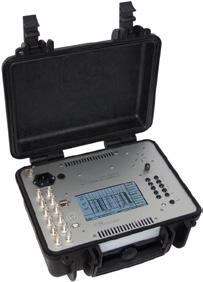
For over 130 years, Megger has been the premier provider of portable test and measuring instruments for electrical power applications. Although Megger is best known for its world-famous range of insulation testers, we can assist your acceptance, commissioning and maintenance testing for predictive, diagnostic or routine purposes. By working closely with electrical utilities, standards bodies and technical institutions, Megger contributes to the dependability and advancement of the electrical supply industry.
DLRO2
2 Amp DucterTM Low Resistance Ohmmeter
n New “difference meter” for quick data comparisons
n Safely tests the resistance of inductive loads at 1A
n <600 V active protection against inadvertent live connections without blowing a fuse
MPQ1000
Power Quality Analyzer

n Automatic CT recognition
n Onboard data analysis
n 1000 V ac and 1000 V dc range
DCM305E
Earth Leakage Clampmeter
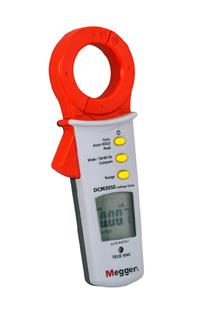
n 0.001 mA resolution
n Up to 100 Amp range for standard ac current measurements
n Low pass filter to aid stability of readings
MPD Scan
Handheld Scanner for PD Surveying

n Fast verification of partial discharge activity in MV and HV plants
n Universal application range due to a wide variety of sensors
n Integrated camera and QR code scanner
AVO835
True RMS Multimeter
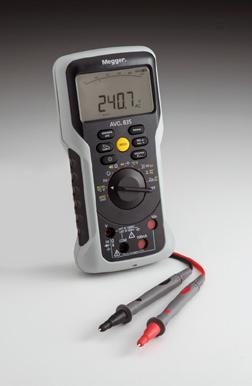
n High/low sensitivity live circuit detection
n Phase sequence measurement for 3 phase circuit and motor testing
n 10 MΩ and 10 kΩ input impedance switching
PD and Tan delta testing, PD online monitoring
Partial Discharge and Tan delta testing is together with Static testing complementing the standard FAT and on site testing procedure of the insulation status for critical HV motors and generators.
The ICMflex system can perform PD and Tan delta testing in one simultaneous test sequence with one common test report. It is a compact and portable all in one unit suitable for on site, as well as workshop testing. Portable AC Hipot solutions are available too.
The ICMmonitor system is an approved solution for online Partial Discharge monitoring on HV rotating machines and it can come as a portable unit for temporary monitoring/ spot testing, or as a permanently installed monitoring cabinet with remote access and alarming.

MPQ1000
MPD
SCAN
DCM305E
DLRO2 www.megger.com n +44 (0) 1304 502100
Megger Baker Electric Motor Analyzers
The Baker Instruments family of electric motor analyzers provides a comprehensive suite of tests which characterize the health of your motors and generators. These testers are valuable in industrial settings for predictive maintenance, and in motor repair/rewind shops for troubleshooting and QA.
Automated Diagnostic Test Equipment
n Asset-centric approach promotes turnkey testing for operators
n Separating Asset from Installation provides greater insight into asset service needs and issues
n PowerDB Dashboard secure cloud-based analysis software
n Choice of Manual, Automatic, or Sequence testing
n Screen-level context sensitive help
n Adaptable search capability
n Asset management tools
NetEP
Site Installed Dynamic Monitoring System
n Permanently installed, fully automated machine system monitoring solution which evaluates each component of the electromechanical system and identifies electrical and environmental factors that will accelerate insulation degradation
n The system continuously acquires health and performance data on up to 32 electric motors and the rotating machine systems they operate

MTR105
Rotating Machine Tester
n Full colour graphic display built to CAT III, IP54 and for use up to 3000 metres,
n Adjustable IR from 10v up to 1kV and 200GΩ using: 3 Phase Spot, PI, DAR, IRt and Guard Terminal
n 4 wire Low Resistance (uni and bidirectional measurements) , LCR, Temperature, Motor rotation, diode test
n Voltage (measures ac 10 mV up to 1000 V; dc 0 to 1000 V; TRMS), Frequency (15Hz to 400Hz), Phase Rotation
Dynamic Motor Analyzer
n The Megger Baker EXP4000 is a portable Dynamic Motor Analysis System



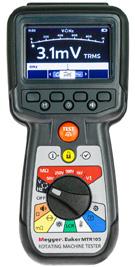

n Test domains: Power quality, machine performance, current, spectrum, torque, variablefrequency drives, continuous monitoring, transient analysis (e.g. start-up), motor efficiency
PPX
High Voltage Motor Tester
n For high voltage machines and large form-wound coils, the Baker PPX series extends HiPot and Surge test voltages of the DX and AWA up to 40 kV.
n Available models: PPX30 (30 kV) - PPX40 (40 kV) - PPX30A (30 kV with armature testing capability)
MTR105 PPX
NETEP
EXP4000
ADX
www.megger.com/baker n 800-752-8272
ENGINEERINGUK RELEASES NEW REPORT ON ENGINEERING IN HIGHER EDUCATION
ENGINEERINGUK, A NOT-FOR-PROFIT organisation that works in partnership with the engineering community to inspire tomorrow’s engineers, has released an extensive new research report – 'Engineering in higher education' (bit.ly/EUKAtoE)– which explores the number, characteristics and outcomes of engineering and technology students in higher education (HE) in the UK.

Based on the 2020/21 data from the Higher Education Statistics Agency (HESA), the report also compares the data for engineering and technology students alongside that of students studying on HE courses overall.
In terms of numbers, the report reveals there were 38,615 firstdegree engineering and technology undergraduates in their first year of university. This equates to 6.1% of all first-degree undergraduates.
When taking into account undergraduates in all years of study and postgraduates, the number of engineering and technology students rises to 179,000 – which reflects a 14% increase since 2009/10. This is just under 10 percentage points (pp) higher compared to all subjects – where the number of students has risen by 5.2%. However, when looking at the total number of students, it's important to consider that only a proportion of this
group will be graduating and entering the job market each year.
In terms of diversity of students, the report paints a mixed picture. The most concerning diversity issue among engineering and technology students was found to be gender – with only 18.5% of undergraduates being female students. This is exceptionally low compared to the 56.5% representation seen across all subjects, and is an issue which is mirrored across the engineering and technology workforce.
Lack of ethnic diversity is another concern, with the majority (66.1%) of engineering and technology students being white. Although, this figure is slightly lower than all subjects combined – where over 70% (72.1%) of students are white. This is a result of the better representation of Asian students in engineering and technology (18% vs 12.7% for all subjects). However, only 8.1% of engineering and technology students were black and 4.9% were mixed – which is similar for all subjects (8.3% and 4.8 respectively).
The report also reveals a lack of diversity in terms of disability and social mobility. Only 10.5% of undergraduates have a known disability (vs 15.1% for all subjects), and only 11.2% were from areas with the lowest HE participation –quintile 1 (vs 13.5% for all subjects).
FROM A LEVELS TO ENGINEERING
Dr Claudia Mollidor, Head of Research & Evaluation at EngineeringUK, commented: "As with all pathways into engineering and technology careers, it's really important to understand the numbers and characteristics of students coming through the higher education route.
"Our report highlights a concerning lack of diversity among students, particularly the underrepresentation of women. If the UK is going to have a successful and thriving engineering and technology sector, it's clear we need to do much more to ensure studying engineering and tech appeals to young people from all backgrounds."
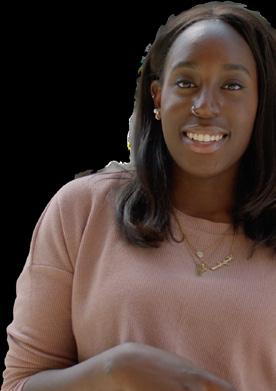
HOUGHTON INTERNATIONAL JOINS UNITED UTILITIES MOTOR REPAIR SERVICES FRAMEWORK
FOLLOWING A COMPETITIVE TENDER PROCESS, electromechanical engineering specialist, Houghton International, has secured a place on the United Utilities Water Limited Motor Repair Services Framework.
United Utilities provides water and wastewater services to nearly seven million people in the North West of England, supplying 3.2 million households and over 400,000 business premises.
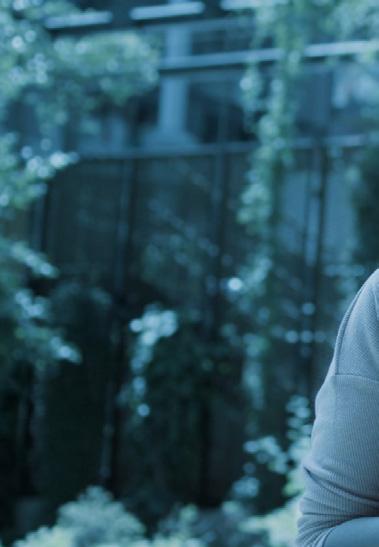
The framework agreement, which commenced in November 2022, is valid for four years, with the option to be extended a further four years if required. It covers the overhaul, repair, rewind and testing of motors and encompasses all United Utilities sites, including 96 water treatment works and 575 wastewater treatment works. Houghton International is one of six companies selected for the framework agreement.

www.theaemt.com Quarter 2 2023 INDUSTRY NEWS 6
Jessica Pooley, Business Development Manager at Houghton International, commented: “We are delighted to have been selected for the framework agreement, and we look forward to working with United Utilities over the coming years.”
Exploring the gender gap in higher education
NEUTRONIC TECHNOLOGIES PARTNERS WITH WEG
NEUTRONIC TECHNOLOGIES AND WEG HAVE ANNOUNCED a strategic partnership that sees Neutronic Technologies appointed as an official distributor for WEG products.
The agreement brings together Neutronic Technologies' 22 years of expertise in industrial electromechanical repairs and solutions with WEG's 62 years of manufacturing electric motors.
Located in Warrington, Neutronic Technologies specialises in repair solutions for electric motors, pumps, gearboxes, variable speed drives and industrial automation for the UK's manufacturing industries.The company has experience across various industries, such as aerospace, automotive, food and beverage, distribution, textiles and chemicals.
A global manufacturer across 15 countries, WEG has developed an extensive portfolio of 1,500 product lines. Annually the company manufactures over 19 million motors to support various industries.

Commenting on the partnership, Neil Gallant, Managing Director at Neutronic Technologies said: "WEG products are among the very best available in the market, and it is clear to see
that WEG puts a huge emphasis on quality and energy efficiency. Speaking with the team at WEG, it was obvious they share many of the same values as Neutronic, so working together with them makes a lot of sense for both of our businesses. Working together with WEG will further strengthen our value proposition and ensure that our customers are provided with the very best high quality and efficient electric motors."
Patrick O'Neill, WEG UK's Managing Director, added: "We are delighted to announce our partnership with Neutronic Technologies, who we know will improve our after-sales service and product offerings in the UK market."
DYNAMIC VERTICAL BALANCING MACHINES FOR BALANCING PUMP ROTORS
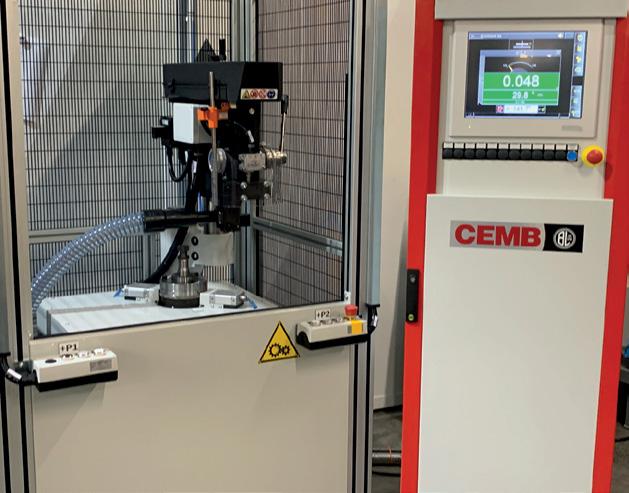
A comprehensive range of high quality, vertical balancing machines and support services for pump manufacturers:
• Superior vertical hard-bearing balancing machines for precision balancing of pump impellers from 2kgs up to 5,000kgs.
• Available in one-plane configuration for the measurement of static unbalance, or in two planes for the measurement of dynamic unbalance.
• Supplied with or without milling or drilling correction (manual or automatic).
Support services
• Service & calibration delivered by our highly trained, UK based engineers.
• Help line offering advise and support with any machine or application issues.
• Portable instruments for convenient vibration analysis and two plane balancing.
• Comprehensive stock of genuine spare parts for swift availability.

• Sub-contract balancing services available to cover capacity or capability contraints.
For further information contact us:
T: 0161 872 3123 or E: enquiries@cembhofmann.co.uk www.cembhofmann.co.uk
Industry NEWS 7 WANTED Hawker Siddeley Brush Switchgear Brush VS1.OCB. Type R4/1MKIV 11 KV 400 AMP Ormrod Diesels 01695 731847 julie@ormrod-diesels.co.uk www.ormroddiesels.com
YOUNG ENGINEERS GET TOOLED UP
ELECTROMECHANICAL REPAIR specialist, Fletcher Moorland Ltd, has launched an initiative to support the younger generation entering engineering, design and manufacturing careers.

Under the banner Get Tooled Up, Fletcher Moorland is giving away five sets of quality tools to young apprentices and aspiring engineers every month. So far, the initiative has seen the company give away infrared thermometers, VDE pliers and hex key sets, from Fluke, RS components and Wera to young engineers from across the UK.
Commenting on the initiative, Matt Fletcher, Managing Director at Fletcher Moorland, said: "Tools cost a lot of money; ask any engineer. It's particularly hard when starting out in an engineering career. You want the best tools to do your job but to get good quality equipment does cost money.

"I want to put decent tools in the hands
of apprentices and young engineers from the start, and I'm committed to doing this."
For young engineers to be in with a chance of winning tools that could help them as they embark on their careers, all they have to do is look out for posts on LinkedIn carrying the #GetTooledUp hashtag and then comment or hit the like button. Each month Fletcher Moorland will randomly draw from the entrants and notify the lucky winners. Anyone who wants to nominate a young person to be entered can also do so by tagging or, if they aren't on LinkedIn, nominating them on the post featuring the hashtag.
To date, Fletcher Moorland has funded the prize tools itself, but Matt believes there is an excellent opportunity for suppliers to support the initiative: "Brand loyalty is a powerful thing and getting tools into the hands of engineers at the beginning of their careers could see lifelong customers born. Plus, from a marketing point of view, supporting young engineers is a great story to tell."
Any tool supply companies looking to support the initiative are invited to contact Matt Fletcher directly. And any young or inspiring engineers, or their colleagues, friends and family, simply look out for the hashtag #GetTooledUp, to enter.
ABB COMMITS TO OFFERING CUSTOMERS THE TOP INDUSTRIAL EFFICIENCY OPTION
ABB HAS ANNOUNCED ITS commitment to providing the most energy-efficient large motor and generator solutions to its industrial customers through a new program called the Top Industrial Efficiency option (TIE).
Electric motor-driven systems such as compressors, refrigerator systems, conveyors and pumps, account for 45% of the world's energy usage, with large motors, those drawing over 375kW, accounting for 23% of all electricity consumed by motors. Increasing the energy efficiency of these motors is one of the single most beneficial steps that can be taken to reduce energy consumption and carbon dioxide emissions. However, the current international energy efficiency standards only cover motors up to 1,000kW, leaving a significant portion of the energy used by motors uncovered. Improving the performance of these large motors by one to three efficiency classes, through selecting the most efficient solution, could lead to a dramatic reduction in energy consumption and carbon dioxide footprints.

The TIE option launched by ABB is a promise to deliver large motors and generators with the highest possible energy efficiency, without compromising reliability, complexity or specification compliance. It is a contractual commitment that suppliers will make to provide their most efficient solution available.
The TIE option is not intended to compete with new and more
demanding standards but rather to raise awareness and actively support the fasttrack introduction of official standards for large electrical equipment. ABB believes that by providing cost-effective alternatives to current standards, it can effect change that will ultimately benefit not only its customers but all stakeholders.
ABB's Large Motor and Generator factory in Västerås has already achieved a large motor efficiency level of 99.05%, which is currently the highest known commercial efficiency achieved and equivalent to an IE7 rating. Each individual motor or generator is tested before delivery, allowing ABB to monitor efficiency increases over time. Despite the efficiency levels so far achieved, ABB sees room for improvement, with the potential to further increase the energy efficiency of the products they deliver by one to three IE classes in general.
The TIE option has several key benefits, including the removal of all barriers, such as no added deviations to specs, no extra complexity, and no compromise on reliability. ABB believes that the TIE option is a practical measure that is free and open to everyone, and its uptake relies on customers prioritising efficiency and the total cost of ownership.
Should ABB's existing customers consistently opt to buy the TIE option, it would correspond to a 1.6 TWh electricity saving during the product's lifetime, leading to a significant reduction in CO2 emissions and running costs.
FEATURE 8 www.theaemt.com Quarter 2 2023 Industry News 8






www.electrominst.com www.wes.uk.com Contact Electrom’s trusted partner in the UK: Wire Electric Supplies +44 (0) 1952 208 730 sales@wes.uk.com +1 720-491-3580 info@electrominst.com
UPDATE FROM THE AEMT SECRETARY
I WAS HEARTENED TO READ A PARTICULARLY POIGNANT post on LinkedIn earlier this month from one of our members. It read that with the electrification of things, the future of the rewind industry is bright – and that young people were interested in getting their hands dirty. In fact, I have spoken to several members this year who have had young people literally knocking on the workshop door looking for work experience.
Another colleague shared a promising article by The Engineer reporting that those studying engineering had risen by 14% over the last ten years, against an average of 5.2% for other subject areas. As promising as these figures are, we should be mindful that engineering is about problem-solving and the best teams for problem-solving are shown to be diverse in their experience.
To recruit the best people into engineering, we must project an inclusive image – which is why the AEMT is pleased to have signed up to The Tomorrow’s Engineers Code: a commitment to work toward common goals, to increase the number and diversity of young people entering engineering careers. We are raising funds to work with Primary Engineer – a charity aimed at introducing engineering to primary school children. No matter where our focus is at the moment, we should not neglect nurturing our future engineers. Importantly, we need to nurture children from a wide range of different backgrounds – this is the best way to navigate current and future challenges. Please consider donating what you can afford by signing our pledge here: http://bit.ly/3lF0YG0.
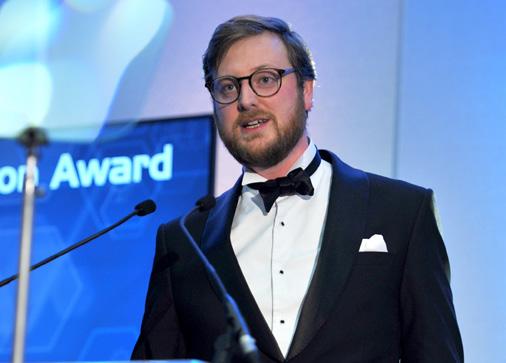
The AEMT, exists to help members connect, share good practice, and learn. This year we have started several initiatives to complement this mission. I’d like to encourage all members who want to expand their network and learn from others to
sign up! Firstly, our Peer Groups are being very well received. Meeting roughly every quarter, the meetings are a safe place to problem solve, learn from each other, and see how others run their businesses. They are a great opportunity for members to tour each other’s businesses and make connections within the industry. We have also launched Business Breakfasts this year. Meeting online every few weeks, each meeting will focus on a different topic of interest selected by the members, lasting only an hour in the morning, and we hope they will inspire members for the day ahead.
If you’ve any comments or suggestions or would like to discuss any of the above points, please don’t hesitate to get in touch with me, one of the council or the President. You can email me at thomas@theaemt.com or call 01904 674 899
Forthcoming AEMT led Courses & Events

www.theaemt.com Quarter 2 2023 AEMT Update 10
For more information or to book any of the couses listed please visit www.ex-repair.com
COURSE TITLE START DATE LOCATION Peer Networking Group Thursday, 11 May 2023 Liverpool AEMT Council Meeting Thursday, 11 May 2023 Liverpool/Online Ex Theory Monday, 15 May 2023 Loughborough Ex Hands-On Wednesday, 17 May 2023 Loughborough Ex Refresher Wednesday, 17 May 2023 Loughborough AEMT AGM Thursday, 8 June 2023 TBC Ex Theory Monday, 19 June 2023 Kuala Lumpur Ex Hands-On Wednesday, 21 June 2023 Kuala Lumpur Ex Refresher Wednesday, 21 June 2023 Kuala Lumpur Ex Theory Monday, 3 July 2023 Aberdeen Ex Hands-On Wednesday, 5 July 2023 Aberdeen Ex Refresher Wednesday, 5 July 2023 Aberdeen Ex Theory Monday, 17 July 2023 Loughborough Ex Hands-On Wednesday, 19 July 2023 Loughborough Ex Refresher Wednesday, 19 July 2023 Loughborough
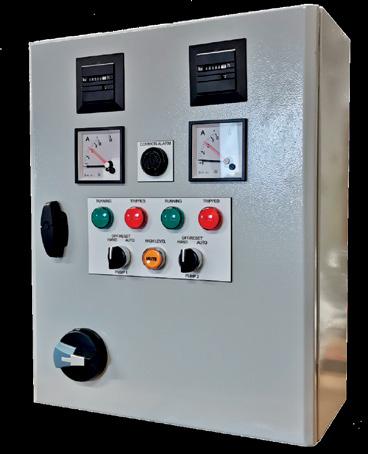
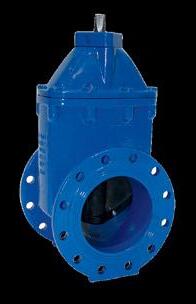


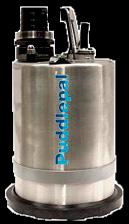





HAVING SUPPLY CHAIN ISSUES? T-T's got you covered, your one-stop shop for pumps, valves and control systems T-T are one of the UK’s leading companies in the design, manufacture, supply and installation of pumps, controls, valves, environmental products and systems Trusted around the world, our extensive range of quality products are designed for reliability, economy and long life To find out more scan the QR code or call our expert team. ttpumps.com +44 (0) 1630 647200 response@ttpumps.com WANTED New or used, 80-100 frame Ex d and Ex de motors For Ex repair course Contact training@aemt.co.uk
Nominations for the 2023 AEMT Awards are open
Following the highly regarded 2022 awards ceremony last November, the AEMT has announced that the nomination process for the 2023 awards programme is now officially open.

Building on its past successes, the sixth outing of this sectorspecific awards scheme will again culminate in a gala presentation ceremony, taking place on the evening of Thursday, 23 November at the Doubletree by Hilton Hotel in Coventry.
Centrally located for easy access from all over the UK, this venue will also play host to the supporting AEMT Conference –a ‘must attend event’ for all members. The complete programme will be announced during the summer, but the conference focus will again be on providing AEMT members with help and guidance on a range of topics that will be of tangible value and relevance in the development of their businesses.
Then, during the evening, the AEMT Gala Awards Dinner will bring together the electrical and mechanical trades sector to celebrate business and professional excellence. Recognising and rewarding the achievements of individuals and companies operating across the maintenance and repair arena, personal endeavour, product innovation, skills training, engineering advancement and commercial acumen will be acknowledged and celebrated.
Operated by the Association of Electrical and Mechanical Trades (AEMT) and produced by Touchwave Media, the awards will again acknowledge the skill, effort and sheer dedication of the people and businesses serving this important sector of industry. With the support of its sponsors, a spotlight will be shone on those businesses that are excelling in their commercial endeavours and, in many cases going far beyond the call of duty in ensuring the safe and efficient operation of plant and equipment within our critical sectors.
AWARD CATEGORIES
The following seven categories make up the 2023 awards programme:
• Product of the Year – sponsored by Plant & Works Engineering
• Project of the Year – sponsored by EMIR Software
• Service Centre of the Year – sponsored by ABB
• Supplier of the Year – sponsored by Drives & Controls
• Contribution to Skills & Training Award –sponsored by Sulzer
• Rising Star Award – sponsored by Fanuc UK
• Diversity in Engineering Award –sponsored by Preformed Windings
• Special Recognition Award – sponsored by AEMT
CALL FOR NOMINATIONS
Entries are being sought for any company, product, application, or individual involved in the supply, installation, service, maintenance and repair of industrial machinery, such as electric motors, drives, pumps, fans, gearboxes, generators, transformers, switchgear, and ancillary equipment. Individuals can put forward entries for themselves and their own company, or they can nominate others that they know merit recognition. The online entry process couldn’t be easier, so anyone wishing to play their part in highlighting
engineering excellence should visit the AEMT Awards website –www.aemtawards.com.

CLOSING DATE
The closing date for all entries has been set as 5.00 pm on Friday, 8 September 2023, so for those wanting industry-wide recognition for a job well done, be it for product innovation or project management, for application know-how or service and repair, they should make a note of this key date.
It is free of charge to enter the awards, but the promotional value associated with being selected as a finalist is worth many hundreds of pounds. And for those individuals and companies fortunate enough to be one of the seven winners during the gala awards dinner, the promotional benefit is even greater.
So, what have you got to lose? Just 20 minutes spent completing the online entry form, providing the information and details that you have at your disposal, and which presents and supports your business and professional endeavours, could make you a winner in your industry’s awards programme; the gravitas and promotional exposure for which is both valuable and enduring.
www.aemtawards.com
www.theaemt.com Quarter 2 2023 FEATURE 12 Awards Update 12

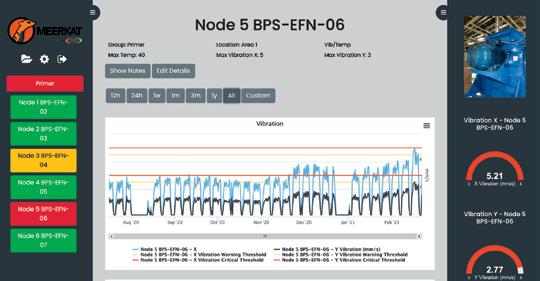
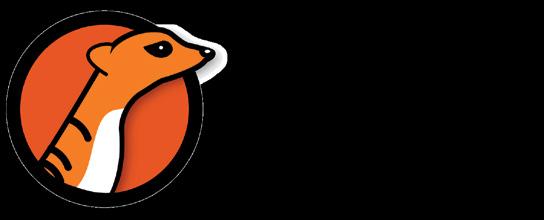


Web hosted condition monitoring Vibration Temperature Current Humidity Pressure Oil Condition 'Monitor data from virtually any source ' Energy Air Quality Occupancy Measure - Monitor - Manage One UK based automotive manufacturing plant saved €316,000 in a six month period by installing a Meerkat wireless vibration & temperature monitoring system on their paint shop extract fans. by hello@fletchermoorland co uk Fletcher Moorland, Elenora Street, Stoke on Trent, ST4 1QG 01782 411021 Book a FREE demonstration at your site, on your plant equipment
4.5 MW 11 kV replacement motor ready in three weeks

MENZEL ELEKTROMOTOREN HAS created a replacement motor for one of India’s largest industrial and medical gas manufacturers. When a large compressor motor failed, causing production losses, Menzel adapted a stock motor, ready for shipping, within three weeks of receiving the order.

The family-run German company ensured smooth commissioning through various steps. Works included electrical reconnecting of the motor windings to meet the required voltage level and starting properties, manufacturing a special tapered shaft end for shrink fit, and drilling new foot mounting holes.
Menzel maintains an extensive stock of large industrial motors, including several own motor series with very good power densities and long lifespans. In this case, the manufacturer supplied a squirrel cage induction motor from its MEBKSW series, with the same characteristics as the failed motor – a 630mm frame size, 4.5MW nominal power, and 11kV nominal
voltage. The motor has IP55 protection and features totally enclosed water-to-air cooling (TEWAC/ cooling type IC 81W).
The final thorough motor checks in Menzel’s in-house test field were attended by the customer’s test engineer, who satisfied himself that the motor was in full working order.
bit.ly/MenzelCom
MORE EFFICIENT AND SUSTAINABLE BEARING LUBRICATION
WITH UP TO 80% OF ALL PREMATURE bearing failures being caused by incorrect lubrication, the Grease App from Schaeffler has been designed to determine the ideal lubricant type, lubricant quantity, grease service life, and relubrication intervals required for initial lubrication and relubrication of rolling bearings.

The software draws on data from the in-house rolling bearing calculation tool Bearinx for the calculations. In this way, under-lubrication or over-lubrication and the risk of premature bearing failures can be prevented.
The app also provides guidelines on selecting suitable lubricants from the Arcanol range. Combined with the automatic lubricators from the
CONCEPT range, intelligent OPTIME lubricators, and Arcanol lubricants, Schaeffler offers a coordinated system for the sustainable lubrication of rolling bearings.
The app is available free of charge in a web-based format or for download via the usual app stores. Once the operating conditions such as loads, speeds, and
environmental influences have been entered into the app, the appropriate Arcanol grease types, grease service life, relubrication interval, and the lubricant quantity required for initial lubrication and relubrication of the rolling bearings by the customer are calculated and displayed. The ideal lubricant quantity is calculated, taking the respective rolling bearing specification into account. For example, the various internal geometries of the rolling bearings are taken into consideration.
The app also provides visual and text-based information on optimally adjusting lubricators from Schaeffler’s OPTIME and CONCEPT series.
greaseapp.com
Servo motor reducers for food machinery
NIDEC DRIVE TECHNOLOGY Corporation (formally Nidec-Shimpo Corporation) has launched a lineup of its VR Series of reducers for servo motors, specifically for food machinery.
With robots and factory automation equipment used in agitation, mixing, crushing, filling, conveying, aligning, and many other food item and drug manufacturing processes, safety is increasingly demanded for the reducers used in those processes.
To meet such market demand, Nidec’s latest VR reducers for food machinery adopt grease of Grade H1 of the NSF, a global standard for lubricant oils for food machinery, and the reducers can be installed in food machinery’s drive sections.
The external dimensions of these recently developed reducers are the same as those of the standard specifications of the existing VR Series reducers, and therefore the new reducers can replace standard ones easily without changing
the equipment’s design. With respect to performance, while an NSF H1-grade grease is used to lubricate the inside of the reducers, they can generate a torque of up to 80% of standard models. In addition, with highly rust-resistant stainless output shafts available optionally, the new reducers can work in high-humidity and other environments that require rust-proof food machinery.
www.nidec.com
Quarter 2 2023 www.theaemt.com
14 Product News
Transfer process and status data over the same Ethernet cable
SYSTEMATIC CONDITION MONITORING
combines sensor signals, data evaluation and targeted communication to help detect issues such as imbalance or bearing damage early on. Turck's compact TBEN-S-2COM I/O module enables status and control data to be transferred simultaneously in Industrial Ethernet networks. Users can efficiently use existing infrastructures without paying premium prices for additional hardware.
Effective monitoring requires sensors to connect seamlessly with a higher-level system such as the cloud. To detect vibration and temperature values, its QM30VT2 sensors can each send the measurements to an I/O module. In the subsequent evaluation stage, speed and acceleration data is used to detect errors, perform diagnostics or make predictions.
In addition to communicating with a vibration sensor, the compact TBENS2-2COM multiprotocol I/O module can
transfer process data from the system control to the motor via various communication standards, including RS485 (multipoint) and RS232 (point-to-point). The module also has inputs for four additional binary signals.
Industrial Ethernet communication is established via multiprotocol technology. The process data can be transferred to the control system at the same time as to edge gateways, HMIs, control systems or cloud applications. This feature ensures that motor control functions as normal in the PLC while vibration data is evaluated at a different level. Vibration data is transferred with a lower priority than motor control data, ensuring reliable communication of both data flows on the same Ethernet cable.

Edge controllers, such as Turck's HMI/ PLC TX700, can pre-process the measured values from the vibration sensors or directly
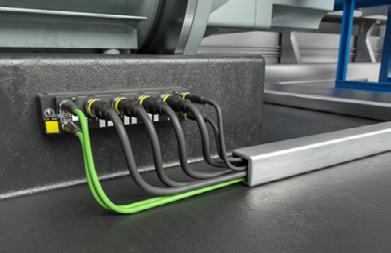
transfer this data, either to local systems or to the cloud, via protocols such as MQTT or OPC-UA. Individually configured cloud dashboards visualise status data and offer various notification options for when a threshold is exceeded. Maintenance engineers, therefore, receive information about irregularities immediately and can access condition monitoring data on different end devices.
www.turckbanner.co.uk

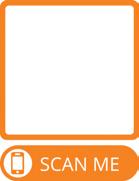
Product News 15 EMiR customers are industry leaders, like you, in all of these electro-mechanical products... Call us today and see how EMiR can help you 0845 009 4588 Visit www.emirsoftware.com to book a demonstration Please scan this QR code to find out more DRIVES COMPRESSORS CONVEYORS ELECTRONICS HVAC MOTORS GEARBOXES PUMPS HYDRAULICS GENERATORS FANS/BLOWERS PLANT MACHINERY SEALS & BEARINGS TRANSFORMERS CONTROL PANELS EMiR Software has over 25 years experience providing software that manages any and all of these services: REPAIR FIELD SERVICE SALES MANUFACTURE & ASSEMBLY DISTRIBUTION ELECTRICAL CONTRACTORS PLEASE QUOTE “RENEW21” TO RECEIVE A SPECIAL OFFER DISCOUNT FROM THIS ADVERT
Motor repair completed within 24 hours
NEUTRONIC TECHNOLOGIES RECENTLY supported a food manufacturer with the repair of a large 355KW motor. Scheduling the repair to eliminate production downtime, it was essential Neutronic cooperated with the customer to turn around the motor repair within 24 hours.
The customer’s reliability engineers completed a vibration analysis of the motor, which identified that the rotor was severely out of balance. The imbalance was causing considerable levels of vibration, which, if left unchecked, could have resulted in a catastrophic breakdown. It was discovered that the vibration issues had caused a hairline crack through the drive end bearing housing, and Neutronic was able to have a brand-new housing manufactured overnight.
A complete overhaul of the motor, including the supply and fitting of new insulated bearings, steaming and stoving of the stator, was carried out. Finally, the rotor was balanced to quality grade G2, using its in-house balancing machine.

The repair was planned during a
scheduled shutdown period. This allowed the repair to be completed without the customer losing any production time. If the balancing issue had been left unchecked, this would have resulted in further damage to the motor, eventually causing a
breakdown and unplanned downtime. A replacement motor would cost around £20K – repairing the motor minimised financial costs for the business.
neutronictechnologies.com

QUICK TURNAROUND MINIMISES PIPE MANUFACTURER'S LOST REVENUE
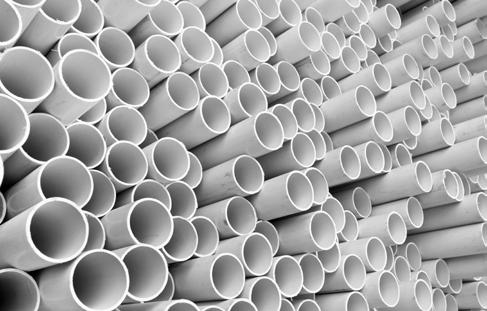
A MANUFACTURER OF PLUMBING and drainage components had a machine down due to a gearbox failure. The breakdown had caused a production stoppage on one of the factory's main lines, and the customer had no spare gearbox on site to get back up and running.
A local repair shop was contacted for assistance, as was a national MRO distributor. Both quoted a period of three weeks for the gearbox to be repaired and returned to site, which did not meet the customer's urgent requirement.
The local Hayley Group branch was called, and the dedicated team moved quickly to reach out to Hayley 24/7 Engineering Services. A van was sent to collect the customer's gearbox and deliver it to the Hayley 24/7 workshop in Dudley, West Midlands. Here, it received a full strip and inspection with a report sent back to the customer outlining the
proposed work needed to get the unit operational again. This proposal was accepted.
In just three days, the work had been completed by the gearbox services team at Hayley 24/7 and the unit was delivered back to the customer's factory, before being reinstated on the production line.
The stoppage to production would cost the customer £100k per week in lost revenue. By delivering a full gearbox repair service in three days, rather than the three weeks quoted by other providers, Hayley 24/7 prevented £250k+ in potential lost revenue.
Thanks to the quality of the work
provided, and replacement components used by Hayley 24/7, the UK's first gearbox repairer to be certified by SKF, the service life of the gearbox has been extended. This means the gearbox should not experience another premature failure if maintained correctly.
www.hayley247.co.uk
FEATURE 16 www.theaemt.com Quarter 2 2023 16 Project Updates
Hospital air handling unit repair

WEBB-ELEC’S SITE TEAM WAS recently called out to inspect an air handling unit that had failed at one of its hospital clients. The unit was tucked away from the main plant room and had only just failed when the call came in. Webb-Elec responded immediately, and a team was on site within the hour. Upon inspection, it was clear that one of the bearings had catastrophically failed. With the motors still running and belted up, the shaft had been pulled to one side, which had worn through the outer bearing casting and then through the main bearing spider arm support arrangement. The impeller had also scored a hole in the fan casing, and it was obvious that this air handling unit repair was not going to be a quick fix!
The site team got to work immediately and fully dismantled the unit. They then brought the impeller, shaft and bearing support assembly back to Webb-Elec’s works. The engineering team then quickly manufactured a replacement

drive shaft and sourced a complete set of replacement support bearings, drive pulleys and belts. The main bearing support arms were bespoke, so a repair solution was fabricated and welded in place to ensure
the arms were as strong as they had previously been. All this was carefully set up and aligned to ensure that no twisting was introduced into the structure, as this could adversely affect the bearing and shaft alignment. The impeller was then carefully cleaned and inspected for any damage that would affect its performance. Once cleared as fully serviceable, it was set up on a CEMB Hofmann balancing machine and dynamically balanced.
Webb-Elec’s team then returned to the site and began to rebuild the unit. They fixed a plate in place to repair the scored scroll casing and refitted the shaft and impeller assembly. The new bearings were fitted along with the repaired support arms, and the pulleys were set up and laser aligned. Finally, the belts were fitted, and the unit was fully run-tested.
webb-elec.co.uk
Project Updates 17
In this issue of Renew, Martin Deiss, Sales Manager Europe & Middle East at Electro Static Technology, answers readers questions about motor bearing protection.


Question: I run a motor repair shop, and we use the SKF discharge detector (TKED 1) to detect bearing current. It seems to give very variable results. At what number of discharges per second is there a major problem? On one motor, I recently measured 6000 in 10 seconds.
Martin Deiss: That instrument counts the number of discharges per second. But it doesn't tell you the voltage at the instant of discharge, and that's going to determine how much energy is released, and how much damage is done. So the detector will tell you when there's a discharge, whether it's at 5 or 50V. The damage increases by the voltage squared, so if you double the discharge voltage, you quadruple the damage. So the voltage level is important, as well as the number of discharges. That's why we recommend monitoring shaft voltage and looking for the voltage that discharge occurs at.
With that said, in your example, you were seeing 6000 discharges in 10 seconds: that's 600 per second. In motors without bearing protection, the average that we see is 1000-2000 per second, so that's relatively mild.
Question: The root cause of electrical bearing damage from VFDs is an imperfect sinewave in the drive's output. In that case, a drive manufacturer/model with the most sinusoidal waveform will have less risk of damage. Is that right?
Martin Deiss: In theory, yes. In practice, it doesn't make much difference. When you hook up a drive's output to a motor, you have current running through the windings. Windings have high inductance, which actually makes them act like a filter for the current. So all drives' current waveforms are pretty close to sinewaves. They still have a lot of high-frequency spikes, but there's obviously a sinewave in the waveform.
But the motor doesn't filter the
voltage. The voltage waveform still looks like a mess of pulses. It is those voltage pulses that cause capacitive coupling between the motor's components and produce the shaft voltage that discharges through the bearings.
This will be a problem for virtually all drives. The possible exception we know of is matrix drives, which don't include a capacitor bus. Instead of putting out pulses of constant voltage from a huge capacitor, they directly patch together the three input phases into variable frequency output. Matrix drives don't give perfectly clean output waveforms either, but they are orders of magnitude cleaner than what you get from a regular drive.
Question: In connection with the last question: Can't you make the drive's output more sinusoidal with load reactors, dv/dt filters, and sinewave filters?
Martin Deiss: Sort of. Load reactors, dv/dt filters, and common mode filters will smooth out the current waveform to some degree. But they don't affect the voltage waveform much, so you will still have a problem with shaft voltage and bearing discharge.
There are actual sinewave filters out there that will smooth the voltage waveform into a sinewave. These are mostly used in petroleum and mining applications where the drive is very far – sometimes kilometres – from the motor. Because they filter the voltage, they're great at cutting down reflected waves, which can kill bearings and motor windings.
But they are expensive, bulky, and hard to find. They're out there, but there are also a lot of so-called sinewave filters that actually only filter the current. So you've got to know what you're getting. Read the specs, look at the before and after pictures carefully, and ensure the product does what you think it does.
Question: I have heard that shaft grounding is unnecessary if the drive is closer than 20' (6m) to the motor. Is that true?
Martin Deiss: VFD manufacturers say you should keep the drive within 100-150 feet (30-46m). At higher distances, you get reflected voltage waves. Voltage reflection can double the voltage level at the motor terminals. This idea is shown
in the figure: The blue wave is voltage coming from the VFD, moving right, and the green wave is reflected voltage, moving left. The red wave is their sum: the total voltage at each point in the cable. (The voltage coming from a drive is a square wave, not a sine wave as shown here, but a square wave can be treated as a sum of many sine waves of different frequencies. We show only one frequency here for clarity.)

Voltage reflection has two consequences. First, it can burn up the motor windings, and second, it makes for higher shaft voltage. Higher shaft voltage means you have more energy available to discharge through the bearings. So more damage per arc, and damage builds up faster.
So large distances are bad, but as far as bearing safety goes, shorter distances aren't necessarily safe. Under 100ft, you don't get voltage doubling, but the voltage doesn't change much whether you've got 90ft or only 1ft between the motor and drive. Even without voltage doubling, your average motor-drive system has plenty of shaft voltage available to damage the bearings. TIMES-CIRCLE www.est-aegis.com
FEATURE 18 www.theaemt.com Quarter 2 2023 18 Q&A
Q&A
www.brookcrompton.com
Keeping industry turning every second... every day...every year
With over 110 years of technical and design expertise, Brook Crompton offers leading edge energy efficient electric motors across global markets. As the original innovator in electric motor development, Brook Crompton are trusted to power limitless industrial processes and its robust motor design drives fans, pumps, compressors, conveyors and more.
Driven by technology and innovation, Brook Crompton has one of the widest available ranges of electric motors for operation in safe areas, hazardous atmospheres and hostile environments.

The extensive range of stock can be quickly modified to suit customers’ needs and with a high level of technical support from our knowledgeable team we ensure the correct selection of motors is provided for your application.
Brook Crompton’s focus on product and service development ensures we continue to move forward to improve efficiency, offer lower cost of ownership throughout their lifecycle and to reduce environmental impact.
Contact us at: T: +44 (0)1484 557200 E: sales@brookcrompton.com
Changing motor efficiency regulations: what machine builders need to know
By now, engineers and machine builders will be all too familiar with the updated European regulations for eco-design, which, since July 2021, have set out new efficiency standards for motors and variable speed drives (VSDs). From July 2023, the EU is expanding the legislation to ensure electric motors stand up against the latest efficiency standards, making motors — Europe’s biggest single consumer of electrical power — a little greener.
When introduced in July 2021, EU 2019/1781 repealed and replaced the existing regulation on ecodesign for electric motors (EC) No 640/2009. The old regulation was an expansion on existing regulation, and covered single-speed, three-phase 50Hz or 60/60Hz induction motors with two to six poles, a rated output of 0.75 to 375kW and a rated voltage of up to 1,000V. The standard also set out efficiency requirements for smaller motors of 0.12 to 0.75kW, larger motors of 375 to 1000kW, 60Hz motors and eight-pole motors.
So, what can we expect to happen in July this year? The next big change will be efficiency rules also applying to single-phase motors rated 0.12 kW and above, which will need to meet IE2 levels. Meanwhile, new motors sold in the UK or Europe with a rated output between 75 to 200kW (2Pole/4Pole and 6Pole) must achieve IE4, meaning Europe will become the first area to require this standard of efficiency for certain motors.
AHEAD OF THE CURVE
Around 8 billion electric motors are currently in use in the EU, consuming almost half of the electricity that Europe produces. The prominence of electric motors on the continent means businesses can make significant energy savings by
ensuring theirs make the grade. Regardless of whether a machine is manufactured in the EU, UK or elsewhere, if the motor or VSD used falls within the scope of the regulation, both the original equipment manufacturer (OEM) and the customer have a part to play in demonstrating compliance.
Equipment manufacturers can gain an advantage by upgrading their machines’ motors and drives before phase two comes into force. While it may be tempting to hold off until July, being proactive will help users reap the long-term financial benefits of increased efficiency while boosting the sustainability of their machinery fleet.

GETTING STARTED
The EU 2019/1781 sets out strict requirements for machine builders and the provision of technical documentation. Both Annex I (motors) and Annex II (VSDs) stipulate that product information must be visibly displayed on
(a) the technical data sheet or user manual supplied;
(b) the technical documentation;
(c) a publicly accessible website of the motor/ VSD manufacturer, its authorised representative or the importer, and
(d) the technical data sheet supplied with products in which the motor/ VSD is incorporated.
If machine builders install motors or VSDs, they must provide a copy of the relevant data sheet or manual along with the machine’s documentation.
Therefore, before purchasing these machines, customers must request this information from the OEM, if necessary, to demonstrate compliance. This information should then be passed on to facility managers, operators, and other engineers responsible for the machine’s maintenance.
As a Premier partner for WEG and Bonfiglioli electric motors, Technidrive has over 25 years of experience in supplying electric motors and understands the importance of providing high-efficiency equipment — and integrating it into its own industrial drive solutions.
The next phase of EU 2019/1781 will be a milestone for many businesses, pushing the boundaries of what was already a significant shift in the EU’s efficiency pledge. As the July deadline approaches, understanding the scope of the updated standard and acquiring the necessary data sheets, manuals and technical documentation will help businesses prepare and stay ahead of the efficiency curve.TIMES-CIRCLE
technidrive.co.uk
www.theaemt.com Quarter 2 2023 FEATURE 20 Compliance 20
David Strain, of industrial drives specialist Technidrive, explains how changes to European regulations on eco-design for electric motors will impact machine builders.
The EU 2019/1781 sets out strict requirements for machine builders.






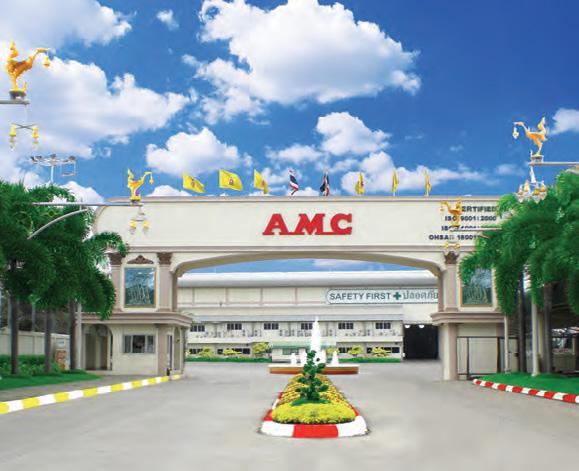
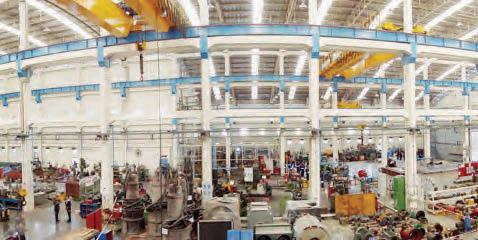


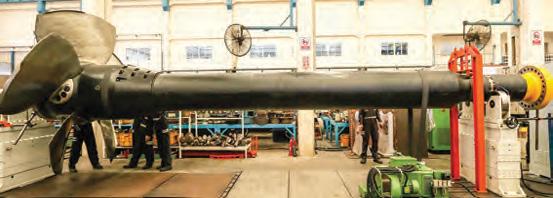

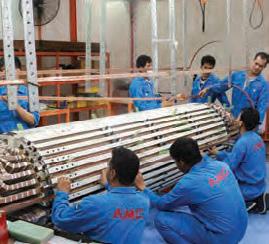







Tackle Engineering Maintenance challenges with Mixed Reality

With recent extreme weather hampering some engineering maintenance efforts, Yan Simard, CEO of Kognitiv Spark, outlines how mixed reality solutions can overcome challenges when travel restrictions are in force and explains how the technology can also drive reductions in carbon emissions and help tackle the skills shortage.
In March of this year, the UK continued its trend of extreme weather patterns with blizzards and 60mph winds bringing treacherous conditions and a potential risk to life to drivers. Severe circumstances meant that people were advised not to make journeys by car. This presented a problem for expert engineers who needed to be on site to complete emergency maintenance and repairs of electrical and mechanical equipment. Any trip not taken meant that site downtime and lost revenue were likely outcomes. Engineers, therefore, require a bestof-both-worlds solution that enables them to play an active role in repairs while avoiding the need to travel to sites.
MAKING USE OF MIXED REALITY
An obvious answer to this issue is to assign a less experienced engineer already on site to the repair, and have them communicate with an expert while completing the fix. However, making a simple call can present limitations when it comes to gaining the insight needed to rectify electric motors, generators, transformers or other equipment.

Mixed reality (MR) solutions take this collaboration one step further by combining physical reality and digital content to enable engineers to interact with both virtual objects and machinery in the real world. Remote workers can establish an initial secure video and audio call with an industry guru, fully hands free and heads-up, before gaining their expert guidance to complete a task. The expert can be located anywhere geographically,
avoiding the need for risky travel in treacherous conditions.
TAKING THE NEXT STEP
MR is all about making enhancements to the physical objects in front of us. For engineers on site, this means complementing video and audio call capabilities with 2D and 3D holographic assets to support task completion, operational efficiency, training and digital transformation efforts in an autonomous manner. To ensure that expert engineers are on the same page, they too can view the same assets to help assist the onsite worker.
A VR headset would be another option in these circumstances to make use of virtual assets, but this
immediately takes them away from engagement in the real world and complicates communications with their off-site expert. By combining the digital identity of the MR user with input from local sensors, situational data and the physical space, engineers have everything to hand to complete that critical repair on a piece of equipment.
CLOSING THE SKILLS GAP
Removing the requirement for experienced engineers to attend site is really just the tip of the iceberg when it comes to the benefits of MR. Organisations can cut their carbon emissions significantly by avoiding the need for employees to travel by car to remote locations. In addition, it’s an ideal way of developing the skills of junior workers.
www.theaemt.com Quarter 2 2023 FEATURE 22 Maintenance Technology
The expert can be located anywhere geographically, avoiding the need for risky travel in treacherous conditions.
Without effective knowledge sharing, senior engineers are more likely to retire from their roles having failed to share expertise that’s highly valuable to a junior worker. With the skills shortage so prominent in the sector, it’s not a risk that a business can afford to take. According to the Institution of Engineering and Technology, there is an estimated shortfall of over 173,000 workers in STEM sectors, which leads to an average of ten unfilled roles per business in the UK. This has led to a staggering £1.5bn cost to the economy each year, with just under half (49%) of engineering businesses struggling to recruit the right workers.
With MR, onsite junior engineers can take on new information more easily than reading a manual before completing a task, especially when an operation is being conducted for the first time. Experienced engineers who are about to exit the workplace can also pass on their knowledge to help encourage talent pool growth.
WIDESPREAD BENEFITS
As a core advantage, MR allows experienced engineers to avoid dangerous travel routes to sites and advise less experienced workers on best-practice fixes to equipment. In reality, the advantages of using the technology stretch much further. Individuals can reduce their carbon footprint by eradicating unnecessary travel, and knowledge
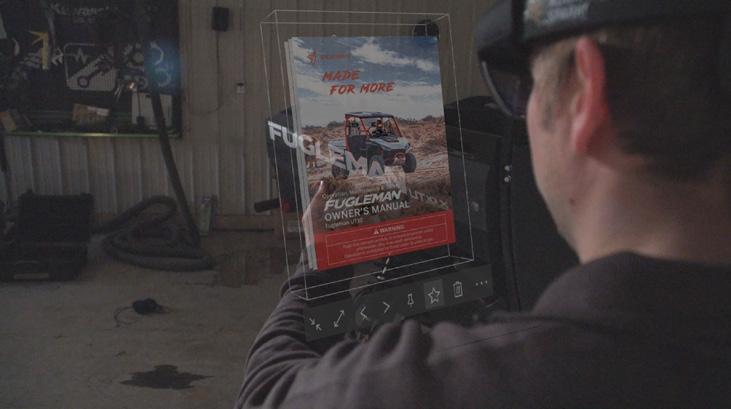
Wire Electric Supplies Ltd


• Elantas Varnish & Resins

• High Voltage Insulations


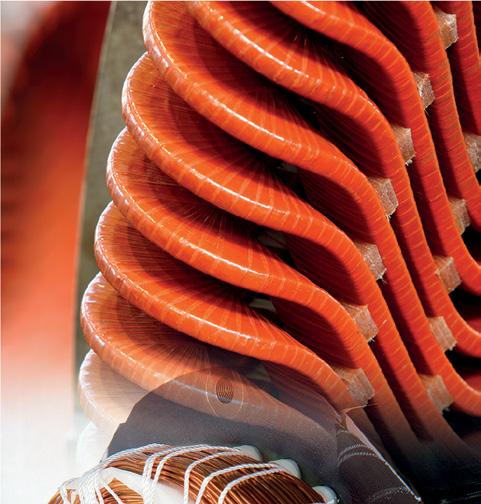
• Adhesive Tapes
• Woven Tapes
• Nomex® & Nomex® Laminates

• Low & High Voltage Cables
• Electrical Sleevings
• Copper Wire
sharing can be easily facilitated. With the skills shortage so prominent in the engineering sector, MR provides the foundation for junior engineers to build their skills and provide greater value to their organisation, all while learning in a way that encourages knowledge retention. TIMES-CIRCLE
www.kognitivspark.com
23 Maintenance Technology
+44 (0) 1952 208 730 www.wes.uk.com
Budgeting and forecasting for better maintenance planning
Budgeting and forecasting aren't just for financial teams; they are also an important tool for maintenance teams and their quarterly and yearly planning. To help maintenance departments plan effectively with their finance teams, computerised maintenance management system specialist, Fiix, looks at how to approach budgeting and forecasting, outlining some critical steps to take and considerations to keep in mind.
With rising costs and supply chain issues putting increasing pressure on businesses in all sectors, and the UK perilously close to officially entering a recession, budgeting and forecasting is probably more important than it has ever been. But what is involved, and how does it affect maintenance teams?

Budgeting is a plan to help control income and expenses while achieving financial goals. Understanding your profits, expenses, and savings allows you to adapt to changing circumstances and take advantage of opportunities when they arise. Budgeting is just one aspect of the financial planning process that can help you better understand your maintenance team's spending, as well as make any necessary adjustments.
PREPARING BUDGETS
Typically, annual budgets are prepared based on the previous 12 months' financial performance. Once created, the budget is passed through the hands of the executive team to ensure it meets the company's financial reporting requirements and meets the company's overall financial goals. Here are three things maintenance teams should do to prepare a budget for the upcoming year:
1. Firstly, review the historical data (generally the previous 12-24 months) to predict future results of costs, cash flow, and gross profits.
2. List and review the maintenance budget considerations such as operating expenses, planned and capital expenditures, cost of scheduled maintenance, expenditures for unplanned repairs or equipment failures, cost of
contractors, and cost of software licenses.
3. Review the 'must-haves' to keep operations running smoothly. These include assets, parts, operating strategy, and maintenance strategy. From here, determine which attributes are not necessary must-haves to keep operations running. These things can be cut to save on costs for the upcoming budget.
"Using historical data, knowing the age of your equipment, and understanding the succession planning of your workforce is very important for your budget planning," said Jason Afara, a former maintenance manager in food manufacturing, now a Manager of Solutions Engineering at Fiix. Maintenance teams often face unpredicted financial challenges, such as unexpected equipment
www.theaemt.com Quarter 2 2023 Budget management 24
failure or downtime, and more recently, the threat of slowdowns due to pandemics or a global recession. Sticking to a budget can help maintenance managers make better business decisions and keep operations running smoothly. Here are some tips to follow when you are creating a maintenance budget:
• Start budget planning early, at least three months before, so you can set your maintenance strategy for the new quarter. The average preparation time for a budget generally takes three to six months.
• Remember that your budget's projected timeframe should be between one and five years.

• Have a clear understanding of your revenue and work with crossfunctional teams to understand the different types of revenue, their value, and when they are expected to occur.
• Know your fixed costs and variable costs well. Fixed costs include employee salaries, rent, utilities,

insurance, property taxes, and more. While variable costs include: supplies, contractors, parts, repairs, travel, services, maintenance, etc.
• Have a clear understanding of your maintenance budget. Use a maintenance budget template to break down all expenses into functional areas and maintenance types by month. A maintenance budget template helps you track your spending on emergency materials, routine maintenance, and capital projects. It also tracks your target versus actual spending, so you know which areas to pay closer attention to.
• Use a maintenance budget checklist to determine that every consideration has been met.
• Always make your financial forecast a part of your budget.
WHAT IS FORECASTING?
Financial forecasting is the process of predicting future events that will impact business results. There are two main types of forecasts: periodic (which looks at the rest of the current financial year) and rolling (which typically looks at the next five quarters or more).
Forecasting can help maintenance and finance teams better plan out key performance metrics and update them based on forecasted numbers.
"Most maintenance teams have historically carried out periodic reviews of their finances in terms of forecasting the future. Covid-19 changed a lot of forecasting attitudes, and now the periodic approach is used alongside rolling forecasts," added Jason.
Launching this spring! Professionalise with our online training hub – access training in your own time, in your own space. Find courses on Ex Repairs, Repair and Rewind, Health and Safety, and more! Visit www.theaemt.com
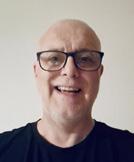
> 26
Maintenance teams often face unpredicted financial challenges, such as unexpected equipment failure or downtime.
25 Budget management
“If there's anyone else who isn't confident on a computer; you can tell them I managed it, and it wasn't as daunting as I expected!”
Built with the help of the University of York on D2L Brightspace.
Lee, Beta User and Ex Repair Course Delegate
Accessible Opening up learning to anyone, where ever they
are.
Flexible Study in your own time and pace.
Sustainable Online learning drastically lowers our Carbon Footprint.
PREPARING FORECASTS
When preparing forecasts, the maintenance team must work closely with their financial team to ensure their budgets are periodically updated. This way, the team has a clear understanding of business performance vs budget.
Here are some key steps to prepare your forecast with your finance team:
• Prepare a report on your actuals and input them into a forecasting template.
• Plan a timeline for your forecast (periodic or rolling).
• Determine the historical trends based on your financial data (in other words, your actuals).
• Apply these historical trends to your current numbers to determine your forecasted results.
The last step is crucial for financial predictions if you can determine potential variables that could change your forecasted predictions (like an acquisition or merger, potentially a catastrophic disaster, or even a recession). You need to try and account for these types of scenarios as closely as possible in your numbers if they are determined to be a risk.
Although maintenance managers don't necessarily need to be leading the financial predictions of a business, they do have an involvement in setting the maintenance budget and being active in the predictions of changes to the business.
"The supply chain challenges for maintenance teams in the last three years is something no one would have forecasted before Covid-19," continued Jason.
To help keep you on track, here are some key tips to keep in mind when you are creating a forecast for your maintenance team:
• Keep it simple: Stick to the steps outlined above, and don't go beyond that. Work with your finance team to determine the best maintenance budget for your team.
• Don't get caught up in the details: It's easy to start reviewing historical financial data and get lost in the nitty-gritty of
expenditures. The best solution is to stick to your actuals, and clearly map out your must-haves from your nice-to-haves when you create your budget and forecast.
• Try to predict the future, but don't let it consume you: With the added stress of predicting what may or may not come, sometimes teams find themselves overcutting or undercutting their maintenance budgets. Predict and forecast with your finance team, but give yourself some buffer room. Although the indicators for a recession are there, map out the worst and best-case scenarios in your forecasts to present to the executive team.
OTHER CONSIDERATIONS
Drawing up budgets and forecasts is just the starting point. Once established, they need to be monitored, updated and reviewed to track and inform the maintenance team's progress and activities. So the following steps should all be taken once the budgets and forecasts are in place.
• Establish a budgeting process: Once your budget is established, you need to work with the finance team on a process for updating it. Determine how frequently you would like to update the budget, as well as what factors or metrics should be factored into it.
• Set up a calendar for updating your forecast and budgets: There
are many different ways of tracking when you are making updates to your forecasts and budgets: You could set up milestones on an Excel spreadsheet, create recurring appointments in Google Calendar or iCalendar (which syncs across all devices), use an app such as Gantt Chart Maker, or even set it up on your computerised maintenance management system (CMMS).
• Build reports: Work with your finance team and provide reports regularly so that they can be shared with the broader team.
• Create a checklist of metrics you'll use while tracking progress against previous forecasts: If necessary, modify this checklist based on any changes made since last year's updated forecast was created (i.e., if there has been any significant change in demand for various types of services).

• Have a good relationship with your vendors: Continue to develop a great relationship with your vendors and good reporting on your expenses.
Budgeting and forecasting are two important aspects of financial planning that can help you better understand your current financial situation and ensure that any necessary adjustments can be made to meet your financial goals in the future. TIMES-CIRCLE www.fiixsoftware.com
www.theaemt.com FEATURE 26 Quarter 2 2023
26
Budget management
Try to predict the future, but don't let it consume you.
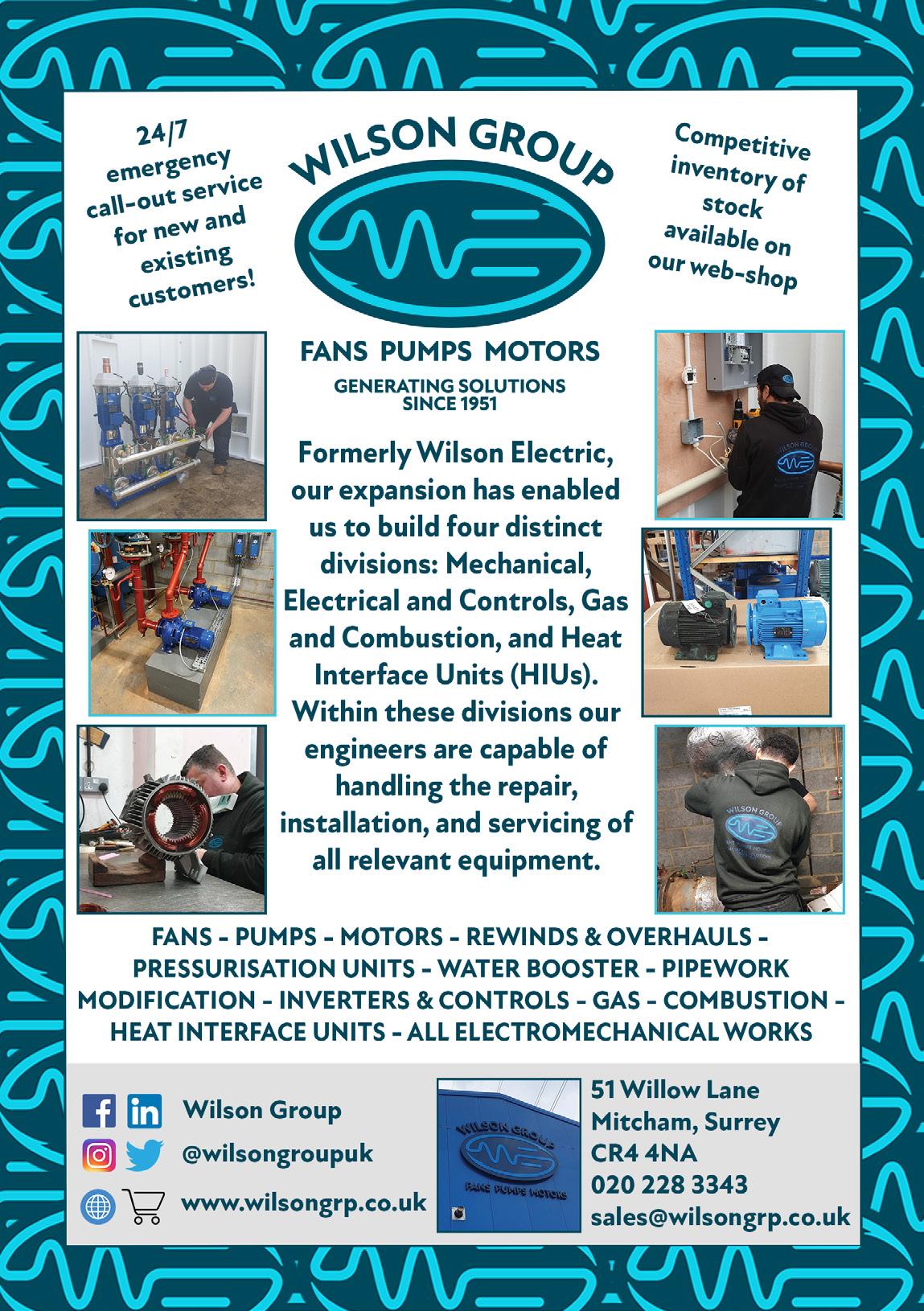
Connect motor terminals correctly to avoid downtime


Matt Fletcher, Managing Director of Fletcher Moorland, looks at how motor terminal blocks can contribute to unplanned downtime and how it can be avoided.


There's something about the terminal block arrangement in figure 1 that I don't like at all. What you're looking at is a mock up of the terminal block of an AC electric motor. You may have hundreds of these on your site spinning away happily, making you money. But sometimes they suddenly stop, the machines aren't running, everyone's in a panic, and you're losing money.
A high resistance joint, which can lead to overheating of the connection and subsequent separation of the motor lead cable from the crimp, is often the cause. The term' loose connection' is bounded about. That may be true; the connection may have been loose, and localised vibration could have caused the overheating, but the cause is not always a simple loose connection. It might have been a poor connection at the crimp that caused this. Or, the reason could be as simple as how these terminals are arranged. I see this frequently when an electric motor comes to us for repair. Often, people are simply not aware of how the terminal posts should be arranged.
In my example, the first three brass-coloured posts are where the three-phase power is introduced to the motor. Ideally, a face-to-face connection is needed between the lug on the incoming supply and the lug on the motor lead.
I've shown an arrangement that is wrong. It might look ok, but if you think of the current path, it has to flow from the top incoming lead lug, down through the securing nut, down the threaded post, down through the delta link, and down through the other securing nut to the motor lead lug. Now I'm unsure
of the current carrying capacity of a nut, washer or threaded post. What I do know is that there are many contact faces in this arrangement. Just one of these could be the reason for a high resistance joint or loose connection. Then there are six of these per motor, so six times the possibility of a fault.
Now take a look at the correct arrangement in figure 2. The lugs and delta connection are all faceto-face. The washers, nuts and threaded posts are there to secure that connection, not to be a part of it.
I urge users of electric motors to check inside the terminal box periodically, safely, when the power is off. Very often, when a motor is running, and vibration levels are ok, there is the assumption that everything is ok. If in doubt, a resistance comparison test can identify a high-resistance joint. Sometimes just looking at the connection is enough too.
I'd offer a word of caution here. Simply breaking out the socket set to tighten or rearrange the terminals is not adequate; there are torque guidelines for motor terminal connections which should be followed. I only know a few people who actually take notice of these for their electric motors. Most fitters just make sure 'it's tight enough'.
If, after rearranging and tightening the connections, the resistance comparison test shows more than a 2% difference in the winding resistances that could point to a poor crimp connection.
Now we're getting into some invasive work. The crimp could be remade, or the motor could be swapped out.
These are simple points to focus on and may seem almost insignificant, but if you and your teams pay attention to the joints in your motors' terminal blocks, you never know, you could prevent an unexpected failure from happening on your site. TIMES-CIRCLE
fletchermoorland.co.uk
FEATURE 28 www.theaemt.com Quarter 2 2023
28 Best Practice
Figure 1: How not to connect a motor.
Figure 2: One way to avoid high resistance joints.
You could prevent an unexpected failure from happening on your site.









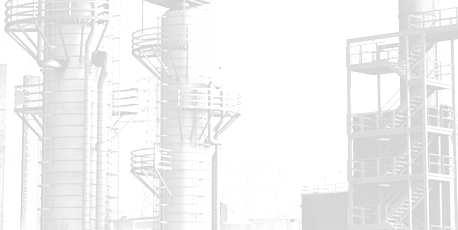
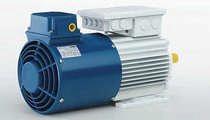
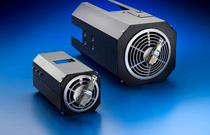

SUITABLEFORMOSTMAJOR MOTORMANUFACTURERS INCLUDING LOWCOSTALTERNATIVETOOEM HIGHQUALITYSPECIFICATION HIGHQUALITYSPECIFICATION SHORTLEADTIMES SHORTLEADTIMES CUSTOM/BESPOKEDESIGN&BUILD CUSTOM/BESPOKEDESIGN&BUILD MANUFACTURER’SWARRANTY DELIVERIESTHROUGHOUTTHEUK DELIVERIESTHROUGHOUTTHEUK CREDITCARDPAYMENTORACCOUNT CREDITCARDPAYMENTORACCOUNT ARFONREWINDS(PUMPS,DRIVES&MOTORS)LOCATIONS:NORTHWESTENGLAND&WALES UNIT4STADIUMCOURT,BROMBOROUGH,WIRRAL,CHESHIRECH623RN TELE:01513346808/FAX:01513461763/E-Mail:sales@arfonrewinds.com ANDMANYOTHERS
Practical preventive maintenance for VSDs
Modern variable speed drives (VSDs) rarely fail and, like your typical motor car, when well-looked after they can provide many years of incident-free service with a lifespan of several decades. However, as with any car, in order to achieve the longevity intended by the manufacturer, you still need to take good care of your drive, keep it maintained, and ensure that it is operating within its design specifications.
The car analogy doesn't end there. Most motorists are capable of checking their oil levels or keeping the windscreen washer fluid topped up, and similarly, there are some basic maintenance tasks that can be carried out in the field. However, it should be pointed out that anything more involved, i.e.' under the hood', or requiring any sort of component replacement, should be carried out by the manufacturer or an accredited service engineer.
BASIC MAINTENANCE TIPS
Fans and filters should be regularly cleaned to prevent the build-up of dust. Heat is a drive's number one enemy, so it is important to ensure that the drive has a constant supply of clean air to prevent overheating. Indeed, for every 10° rise in operating temperature, the lifespan of the drive's capacitors will halve. This can be prevented by periodically spraying air through the heat sink fan. The air must be oil-free and contain no water. Fans and filters may be replaced in accordance with the manufacturer's recommendations, but again this should be carried out by an accredited professional.
Checking and tightening external
connections while equipment is dead and isolated is also important, as heat cycling and vibrations can loosen them over time, potentially resulting in nuisance trips, overvoltage faults, clearing of input fuses, or damage to protective components. This should be done at least annually, or more frequently if the drive is situated in an area where vibrations are likely to be an issue.
Beyond keeping the drive clear of debris and checking connections, preventive maintenance in the field is not so much about the inner workings of the drive itself, but about making sure that the conditions around it are conducive to healthy operation. Excessive moisture, dust, heat and corrosive gases can all affect drive operation, and shorten the time needed between maintenance intervals, as well as the drive's expected lifetime. The more you can mitigate this, the better it will be for your drive. The manufacturer's recommendations for maintenance intervals will typically make the assumption that the drive is operating in a clean and dry environment, free from contaminants. These recommendations should therefore be considered a baseline, as the tougher the environment, the more frequently the drive will need checking and maintaining.
WHEN TO GIVE YOUR DRIVE AN MOT
In normal conditions, a drive can operate for many years
without incident. However, this doesn't mean that maintenance can be neglected, because on a long enough timeline, a poorly maintained drive will eventually fail, just like a poorly maintained car. Many facilities are reluctant to interrupt production for any length of time, particularly on critical applications.
However, this has to be weighed up against the implications of a drive failing unexpectedly, which can result in much longer periods of downtime, and will have serious knock-on effects on the rest of the facility. Emergency repairs, or sourcing a replacement at short notice, can also be very costly, with
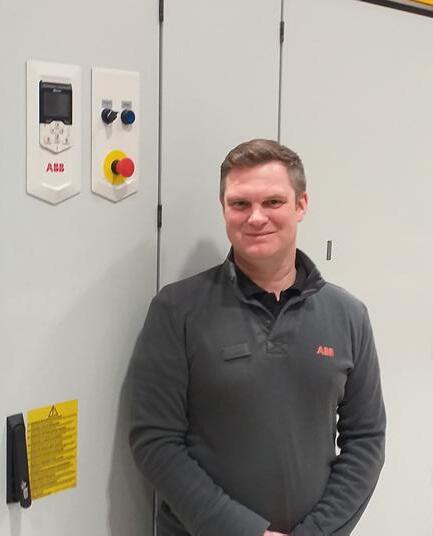

www.theaemt.com Quarter 2 2023 FEATURE 30 DRive Maintenance
Neil Rayns, Drives Workshop Manager at ABB's Coalville workshop, looks at the importance of preventive maintenance for drives and the practicalities of implementing a successful preventive maintenance plan.
ABB's Drives Workshop Manager, Neil Rayns.
An effective preventive maintenance programme can help to significantly reduce maintenance costs
the clock constantly ticking in terms of lost production for every second that the drive and/or process is out of action. Regular preventive maintenance is essentially an investment in avoiding failures and eliminating production disruption.


While processes may vary from manufacturer to manufacturer, in ABB's case preventive maintenance can be carried out in three-, six- or nine-year intervals – depending on the type and criticality of the drive, and level of service agreement. A dedicated workshop provides comprehensive inspection, maintenance and testing procedures that are not always possible or practicable in the field due to, for instance, a lack of space, harsh environments, or limitations on access to the device's location. The drive will be stripped down and components thoroughly inspected and cleaned, and any components replaced according to the device's maintenance schedule, or if they show signs of premature wear. The drive is then functionally tested before being shipped back to the customer.
Aside from significantly reducing the likelihood of unplanned downtime from unexpected drive failures, regular preventive servicing can also eliminate performance drift over time, ensuring that it is returned to its original efficiency from the day it was first installed. Allowing the manufacturer to service the drive also guarantees that only genuine spare parts are used, along with factory-approved diagnostics, repair and testing procedures.

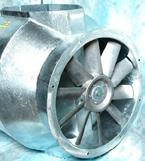
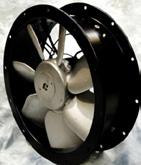

THE WIDER CONTEXT
Preventive maintenance can be taken a step further through effective lifecycle management of drive assets. This is achieved by taking a strategic whole-life approach to the management of both maintenance and upgrades for all drives in a fleet, considering maintenance requirements within the context of a drive's lifecycle stage. This can be as simple as sending a drive's serial number to the manufacturer and asking them to check its maintenance requirements, or registering it for reminders when it is due to be serviced. This helps facilities to arrange services around planned downtime, ensuring that their drive remains in peak condition while eliminating the risk of unexpected failures.
Ultimately, better preventive maintenance allows drive owners and operators to exploit their assets for longer, and increase their ROI. The reduced likelihood of failures means that drives have to be replaced less often, which not only saves money in avoiding early replacements, but also means fewer drives need to be disposed of prematurely, helping to lessen the impact of the drive on the environment.
IN SUMMARY

Drives are extremely reliable, and, when well taken care of, will often provide many years of service. However, they are not indestructible, particularly when operated in harsh conditions. An effective preventive maintenance programme can help to significantly reduce maintenance costs, and all but eliminate the cost of having to unexpectedly replace an asset, as well as any unplanned drive downtime that may entail as a result. Implementing such a programme requires a strategic approach, taking into account a drive's age, criticality and operating environment, but when done successfully, it can provide significant benefits for the overall resilience and reliability of processes. Just like your car, if you take care of your drive, it will take care of you. TIMES-CIRCLE


Drive Maintenance 31
www.theaemt.com Quarter 2 2023 BEATSON FANS & MOTORS 0114 244 99554 www.beatson.co.uk sales@beatson.co.uk Industrial fans Axial impellers Geared motors Electric motors Inverters and starters Fan balancing Repairs and rewinds And all related products and services FROM STOCK PLUS Suppliers to industry since 1928
new.abb.com/uk
Condition-based monitoring: Five key benefits
Allan Findlow, Managing Director of Drive Management Services (DMS), part of the Hayley 24/7 group, outlines the main benefits of employing a condition-based monitoring approach.
Condition-based monitoring is the process of extracting and analysing data produced by machinery as a way to enable a more proactive approach to maintenance. Sensors are often used to monitor parameters such as vibration and heat, with this data being transferred to a computer or mobile application where it can be interpreted and acted upon. It’s a concept that has been accelerated by the Industrial Internet of Things (IIoT), which harnesses the power of interconnected digital technology to inform maintenance programmes.
REDUCE MAINTENANCE COSTS
While it’s true that modern electric motors, bearings and pumps are more reliable than ever, properly maintained assets will perform better for longer. Predictive maintenance, enabled by condition monitoring, reduces the frequency of failures resulting in repairs being needed or replacement components and equipment having to be purchased and commissioned. This reactive approach to maintenance is often the costliest, with maintenance being carried-out against a backdrop of pressure to promptly get production lines back up and running. Sometimes underestimated costs in this situation include overtime or unsociable hourly rates for staff fixing the problem, expedited delivery charges, and the high callout charges of third-party service providers (e.g., mobile hydraulic hose repairers).


A preventative maintenance programme stipulates components and machinery are simply replaced
for new after a certain amount of time (often between 30,000-40,000 hours for a modern electric motor), regardless of condition. This is also an approach that can come with high costs that are sometimes unnecessary. Instead, by harnessing dataled insight to guide, shape and prioritise your maintenance activity, condition monitoring can improve the service life of machinery, improving ROI across the plant.
REDUCE UNPLANNED DOWNTIME
Identifying trends and weak points, and being alerted to equipment operating outside of its normal constraints by way of temperature
or vibration signature, carries with it a major benefit of reducing the risks associated with unanticipated mechanical failure. Unplanned stoppages can lead to all manner of issues. Revenue is hit with production being lost with every passing hour in manufacturing environments, and sometimes hefty penalties can be issued for non-delivery of contractual obligations, particularly in aggregates and building materials industry sectors. Condition-based monitoring is all about tackling issues before they manifest into something more damaging.
IMPROVE PRODUCTIVITY
As condition monitoring technologies can alert relevant
www.theaemt.com Quarter 2 2023
Condition monitoring & predictive maintenance 32
Condition-based monitoring is all about tackling issues before they manifest into something more damaging.
personnel on-site before a fault develops into something more damaging, businesses can improve overall productivity. Improving the availability of machinery by carrying out smaller maintenance tasks throughout its service life and avoiding more significant problems, means that machinery can perform reliably for longer and production capacity is increased. Staff working around the plant can be more productive, too, with fewer mechanical issues affecting their output.
A data-led maintenance programme also enables more accurate production plans to be created as the predictive power of a condition monitoring solution is realised. Better-informed production plans lead to more precise delivery estimates, resulting in happier customers.
IMPROVE MAINTENANCE TEAM EFFICIENCY
Both reactive and planned maintenance activities consume
your maintenance resource. No matter how big your maintenance team is, the time and energy of those staff is wasted just as much in both unplanned breakdown and diarised stoppage scenarios. Using condition-based monitoring will enable your maintenance team to focus their efforts on the areas of the plant that need attention prior to failure, rather than simply on what has already failed or what may not be anywhere near experiencing issues.
Due to the invasive nature of some maintenance tasks, maintenance induced failure (MIF) is also a risk associated with carrying out planned maintenance. This is, however, yet another area that can be avoided by maintenance engineers not devoting time to unnecessary activities.
BETTER PROTECT WORKER SAFETY
Another core benefit is that condition-based monitoring helps to improve the overall safety of personnel working on site. Sensors detect changes that are indicative of developing faults, allowing action to be taken before the problem has the potential to cause a risk to workers. For instance, serious mechanical failure can present all manner of health and safety risks depending on the application. Disassembly of fasteners threatening machine integrity, debris creation and the unintentional release of toxic substances are all potential risks in certain applications that can be avoided by monitoring parameters such as vibration and thermal variation.
TIMES-CIRCLE
www.dmsinteractive.co.uk

Condition monitoring & predictive maintenance 33
r new Quarter 2 2023 Innovations Industry News Applications Expert Opinion Practical maintenancepreventive for VSDs The curse of the high-resistance joint FOCUS ConditionON:monitoring & predictive maintenance FOR THE MAINTENANCE, REPAIR, REPLACEMENT AND MONITORING OF ROTATING MACHINERY The journal from Never miss an issue of To continue to receive your free copy of Renew, in print or online, register at: renew-mag.com Stay up to date with the latest products, technical insights, news and innovations; for everyone responsible for maintaining the safe and efficient operation of electrical and mechanical plant and equipment SCAN ME
Better-informed production plans lead to more precise delivery estimates.
Proactive vibration analysis in the manufacturing environment
Balancing and vibration analysis specialist, CEMB Hofmann UK, looks at the important role vibration analysis plays in minimising plant and machinery downtime and prolonging machinery and equipment life.

Like us, your manufacturing machines and equipment have a pulse. And also like us, the older they get, the more likely they are to suffer from wear and tear and potentially chronic healthissues, which can lead to poor performance.
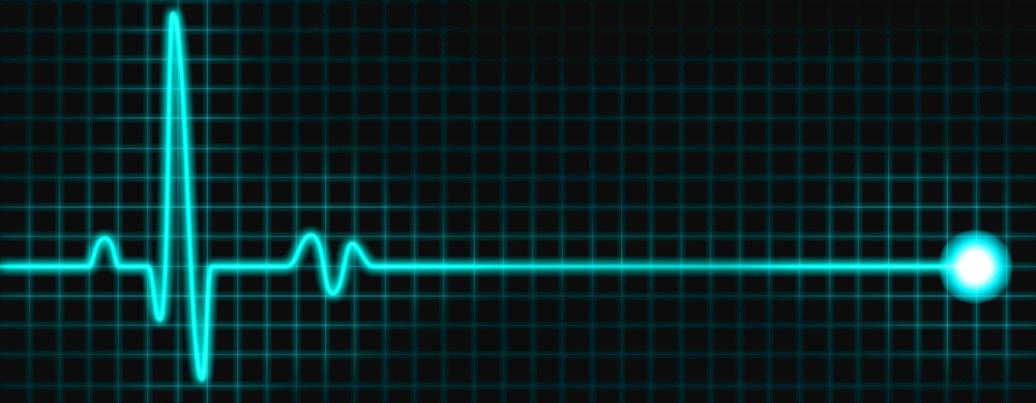
But, by monitoring the health of your production line, you will reap many benefits and can head off acute issues and failures long before they become a reality.
In this context we are talking about vibration analysis or diagnostics, a process that monitors patterns of vibration signals within machinery, equipment and components and reports on its health.
Implementing a predictive routine of this nature is vital in any manufacturing environment. Why? Because you will be able to identify potential health issues long before they occur and take proactive action to ensure your manufacturing facility remains as healthy as possible.
And this leads to reduced downtime, increased productivity, lower maintenance costs and improved profit margins: not to
mention better quality control, reliability and efficiency.
This is particularly true in equipment with rotating parts. You will already have invested in dynamic balancing, which will work to specific tolerances. But, as rotating equipment and components begin to wear, they do not operate to the tolerances to which they were originally balanced. As a result, production quality, accuracy, production errors and unplanned downtime can occur.
So how do you go about implementing a proactive vibration analysis routine?
If you want to undertake vibration monitoring in-house, you need to decide which machines and equipment are critical to production and then develop a regular monitoring routine. You will also need to understand the critical measurement points on your devices.
A plethora of relatively inexpensive equipment is available, including sensors, meters and analysers. There
is also a range of portable balancing vibrometers designed to enable engineers to identify vibration issues in the most convenient manner. But, while they can be used across multiple sectors and applications, your team will need to know how to implement the devices and understand and interpret the data. While the technology to measure vibration trends is becoming more accessible, its proper use requires key knowledge and skill, which is why some companies opt for an outsourced option, using the services of a specialist company. They will deliver a full diagnostic service, comparing current values with a historical baseline and reporting on remedial action to minimise possible failure. With the benefits of a healthy manufacturing facility clear, why wouldn’t you make monitoring the pulse of your operation a priority?
www.theaemt.com Quarter 2 2023 Condition monitoring & predictive maintenance 34
www.cembhofmann.co.uk
TIMES-CIRCLE
Implementing a predictive routine is vital in any manufacturing environment.
Call for nominations now open...

Giving special thanks and recognition to the people, companies, projects and services that play a crucial role in ensuring our food production, utilities, manufacturing processes, transportation and other essential services are maintained and secured.
Endorsements:
“The AEMT Awards is one of the highlights in the industry calendar, and ABB is delighted to have sponsored the ‘Service Centre of the Year’ Category since 2018. I’d like to thank the organisers and offer my congratulations to all finalists and winners on the night.”


 Rob Wood ABB, UK
Rob Wood ABB, UK
“We were delighted to win the Diversity in Engineering category. The AEMT Awards are a fantastic opportunity to network and share best practice within our industry. It’s great to see so many businesses driving innovation and advancement.”


 Eleanor McIntosh Houghton International
Eleanor McIntosh Houghton International

Thursday, November 23rd 2023

DoubleTree by Hilton Hotel, Coventry
The awards are a global celebration of business and professional excellence. They recognise the achievements of both individuals and companies manufacturing, distributing, maintaining and repairing industrial machinery such as electric motors, drives, pumps, fans, gearboxes, generators, transformers, switchgear and ancillary equipment.







There are 7 categories to choose from including: Product of the Year, Project of the Year, Supplier of the Year, Service Centre of the Year, Diversity in Engineering, Contribution to Skills & Training and the Rising Star Award. Make sure you enter now to be recognised as a leader in your industry.


2022 Partners:

Enter Now at: www.aemtawards.com
GES Group

SERVICES INCLUDE
• Pumps
• Motors
• Gearboxes
• Servo Motors
• Spindle Motors
• Balancing
• Condition Monitoring
• Marine Repairs
• Mechanical
• Rewinds
+44 (0)282 565 6406 info@ges-group.com www.ges-group.com
EUROSERV LIMITED

SERVICES INCLUDE
• Pumps
• Motors
• Gearboxes
• Fans
• Servo Motors
APPROVED BY
Siemens LV Motors, Brook Crompton Motors, Nidec (Leroy-Somer)
R.E. Field Services Ltd

SERVICES INCLUDE
• Gearboxes
• Laser Alignment
• Condition Monitoring
• Marine Repairs
• Thermography
• Vibration
• Electrical
• Mechanical
• Generators
• Rewinds
0114 256 0425 campbell.edgar@refieldservices.com www.refieldservices.com
Fyfe Wilson Ltd
SERVICES INCLUDE
APPROVED BY
BP E-ON SSE INTERGEN VEOLIA VIRADOR
• Spindle Motors
• Inverter Drives
• Electrical
• Mechanical
• Rewinds
0191 519 3344 martin.mcguffie@euroservltd.net www.euroservltd.net

APPROVED BY NIDEC SIEMENS MAVILOR BOSCH TECMOTORS SCHNEIDER



INTERNATIONAL REPAIR CENTRES
ADYARD ABU DHABI LLC


SERVICES INCLUDE
• Motors
• Fans
• Instruments
• Generators
• Rewinds
00 971-2-5547722
Adeel.Rehman@Altrad.com www.adyardabudhabi.com
LOCATION: U NITED ARAB EMIRATES
APPROVED BY
SIEMENS ABB
• Pumps
• Motors
• Gearboxes Fans
• Laser Alignment
• Transformers
• Balancing
• Machining
• Fabrication
• Rewinds
01279 653333 engineer@fyfewilson.co.uk www.fyfewilson.co.uk



EXCLUSIVE TO AEMT MEMBERS
REACH THOUSANDS OF USERS OF ELECTROMECHANICAL EQUIPMENT WITH A LISTING IN THE REPAIR SERVICE DIRECTORY BOOK ONLINE AT WWW.BIT.LY/REPAIRDIRECTORY OR CONTACT ANDREW CASTLE ANDREW@RENEW-MAG.COM +44 (0)7785 290034



36
Repair Service Directory
r new Quarter 2 2023 Innovations Industry News Applications Expert Opinion
maintenancepreventive for VSDs The curse of the high-resistance joint FOCUS ConditionON:monitoring & predictive maintenance
THE MAINTENANCE, REPAIR, REPLACEMENT AND MONITORING OF ROTATING MACHINERY
journal from Never miss an issue of To continue to receive your free copy of Renew, in print or online, register at: renew-mag.com Stay up to date with the latest products, technical insights, news and innovations, for everyone responsible for maintaining the safe and efficient operation of electrical and mechanical plant and equipment. SCAN ME
Practical
FOR
The
The coloured dots in the listings indicate areas covered, please call or email repairers to confirm exact details.
Houghton International
SERVICES INCLUDE
• Electric motors
• Generators
• Pumps
• Gearboxes
• Transformers
• Condition Monitoring
• Electro-mechanical services
• Onsite testing and analysis
Ex repairs - IECEx approved

0191 234 3000 info@houghton-international.com www.houghton-international.com

Mechanica Utilities Ltd




APPROVED BY
Baker Hughes
Arfon Engineering
SERVICES INCLUDE APPROVED BY
• Pumps
• Motors
• Gearboxes
• Fans
• Inverter Drives
• Laser Alignment
• Condition Monitoring
• Marine Repairs
• Thermography
• Switchgear
0151 334 6808 (Wirral) 01286 675 853 (Caernarfon) sales@arfonrewinds.com www.arfonrewinds.com


Wilson Fans Pumps and Motors
SERVICES INCLUDE
• Pumps
• Motors
• Fans
• Laser Alignment
• Panel Building
• Inverter Drives
• Balancing
• Electrical
• Mechanical
• Rewinds
020 7228 3343 carly@wilsonelectric.co.uk www.wilsonelectric.co.uk


ADC Electrical Ltd










SERVICES INCLUDE
• Pumps
• Motors
• Fans
• Transformers
• Balancing
• Condition Monitoring
• Marine Repairs
• Mechanical
• Rewinds
• Ex Hazardous Area
0191 4165222 info@adc-electrical.co.uk www.adc-electrical.co.uk




WEG Motors Wilo Pumps
Motors Dertec
Motors Hoyer Motors Elmo Rietschle Pumps Robuschi Pumps Parker Drives Mitsubishi Drives Hidrostal Pumps Wistro Force Vented Fans
SERVICES INCLUDE APPROVED BY
• Pumps
• Motors
• Gearboxes
• Laser Alignment
• Condition Monitoring
01304 206690
• Marine Repairs
• Vibration
• Electrical
• Mechanical
• Generators
sales@mechanica-utilities.com www.mechanica-utilities.com


SPP Pumps Belzona Coatings Hydromarque Pumps Brown Europe Gearboxes
Rotamec Engineering Solutions


SERVICES INCLUDE APPROVED BY
• Pumps
• Motors
• Gearboxes
• Fans
• Balancing
01934 743165
• Marine Repairs
• Electrical
• Mechanical
• Generators
• Rewinds
paul.pearce@rotamec.co.uk www.rotamec.com
Lowara Grundfos Motovario Lenze TEC
NIDEC Marelli
SERVICES INCLUDE
• Pumps
• Motors
• Gearboxes
• Fans
• Laser Alignment
• Servo Motors
• Inverter Drives
• Condition Monitoring
• Rewinds
Fletcher Moorland Ltd 01782 411021 hello@fletchermoorland.co.uk www.fletchermoorland.co.uk

• Ex Motor Repair
CEMB Hofmann UK Ltd

SERVICES INCLUDE
• Laser Alignment
• Balancing
• Thermography
• Vibration
• Condition Monitoring
• Balancing Machine Service & Calibration
0161 872 3122 rob@cembhofmann.co.uk www.cembhofmann.co.uk
To feature in the Repair Service Directory, contact Andrew Castle: PHONE +44 (0)7785 290034 envelope andrew@renew-mag.com

APPROVED BY
ABB
FEATURE 37
repair service directory 37
NORD Geared
Geared
Hoarding digital experience risks holding back progress
Outdated attitudes to sharing knowledge risks holding back progress on sustainability and resilience in UK industry, according to a report by Siemens. progress. It outlines how a better interface between industry and education is needed to improve skills development for digital transformation, with people remaining a critical factor for its success.
The study, The Digital Transformation Imperative, explores how businesses can overcome major challenges with the help of digitalisation – and the barriers organisations face in accelerating their deployment of new technologies.
The report found that more collaboration is needed across sectors like utilities, engineering and manufacturing, as firms look to their peers to understand how they can meet ambitions like net zero with the help of digital tools.
According to the study, the Government, trade bodies and strategic technology partner networks have critical roles to play in enabling collaboration without exposing competitive intelligence.
Brian Holliday, Managing Director at Siemens Digital Industries, said: “Businesses are naturally protective of any competitive advantages they create. But digital transformation represents something much bigger than an opportunity for incremental market gains.
“To accelerate progress, industries need to pool their experiences with digital transformation, and how individual companies have succeeded in protecting themselves against future shocks or working towards major goals like net zero.
to increase the accessibility of digital transformation, to inspire and facilitate change within businesses. While public sector bodies and trade associations also have a pivotal role in disseminating success stories and new concepts.”
Skills are also highlighted in the report as another key barrier to
Speaking in the report, Stephen Phipson, CEO at Make UK, said: “The first steps to transformation aren’t about technology, but people. For SMEs, this needs to be driven by leadership and investment in training for staff to be able to cope with the change.”
The Digital Transformation Imperative addresses how technology available today could be deployed more widely by firms to achieve their goals. For example, monitors, sensors, energy use metering and data analytics can be used more widely to digitise physical environments. Meanwhile, digital twin technology could be used more to help firms simulate ideas and concepts.
Carl Ennis, CEO at Siemens UK and Ireland, added: “The significant impact of COVID-19 on our industries, coupled with additional energy and inflationary pressures at the fore, have accelerated rapid transformation in leading organisations at an unprecedented scale.

“The influential role that digital transformation has in enabling sustainable and resilient business is clearly recognised by industry and public sector leaders. Yet our report finds how lack of collaboration, skills and investment represent top barriers in achieving these goals.”
The launch of the report
The
transformation imperative
follows
Siemens convening more than 2,000 industry, governmental and economic thought leaders at its inaugural Transform event last year.

Industry leaders lending their voice to the report include engineering group Arup, and utilities giant Irish Water. Contributions from leading public sector figures and trade bodies include Mayor of Greater Manchester Andy Burnham, the CBI’s chief policy director, and the Vice Chair at the Northern Powerhouse Partnership, who also give their views for the report. chevron-circle-right
To read the full report, visit: www.siemens.com/transform-report
www.theaemt.com Quarter 2 2023 Opinion 38
“Siemens Xcelerator is designed
How organisations are achieving competitiveness, resilience and sustainability. siemens.co.uk/transform
digital
Excellence through expertise
Alpha Electrics is an industry-leading provider of specialist industrial electric motor and drive services, committed to ensuring your business keeps moving.



As a family-owned business run on family-based values, we are proud of the reputation and client base that we have developed over the last 30 years.
Our clients appreciate our high levels of customer service, transparency and sincere desire to always find the right solution to their needs. We are committed to excellence in everything we do and relish working in partnership with our customers.
Our Services include:
Supply New Motors & Drives

Commerical Building
Services Servo & Spindle Motor Repair
Industrial Electric Motor Rewinds
Mechanical Engineering Services
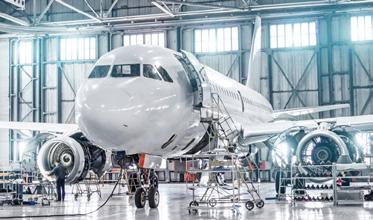



Motion Control Solutions
Authorised distributors for...



LA P HA ELECTRICS
MEMBER BUY ONLINE: www.alphaelectrics.com 24-7 BREAKDOWN SERVICE: 0116 276 8686
Custom Solutions
for Electric Motors Around the Clock, Against the Clock!
Whenever existing mechanical and electrical interfaces are key coupled with fast delivery
Motors up to 15 MW and 13.8 kV
• Low voltage slip-ring and squirrel cage motors up to 3,000 kW
• Medium voltage slip-ring and squirrel cage motors up to 15,000 kW

• Direct current motors up to 2,000 kW

• Frequency converter-proof drives
• In-house load test facility up to 13.800 V, 2.300 kVA, 120 Hz
Customized special designs
• Custom designs for special applications and operating conditions

• Optimized motor design for higher efficiency
• Mechanically and electrically interchangeable motors
• Commissioning worldwide
MENZEL Great Britain Ltd. | UK Branch Office
27 Hunt Drive | Melton Mowbray | Leicestershire LE13 1PB
Martin Rooney | Tel.: +44 1664 500 844 | Mobil: +44 7957 618046 martin.rooney@menzelgb.co.uk
MENZEL Elektromotoren GmbH | German Headquarters
Neues Ufer 19-25 | D–10553 Berlin | Germany
Tel.: +49-30-349922-0 | Fax: +49-30-349922-999
More than 20.000 motors available from stock!
24/7 emergency service
info@menzel-motors.com www.menzel-motors.com
Member Certified Management System




































































































































 Rob Wood ABB, UK
Rob Wood ABB, UK













































